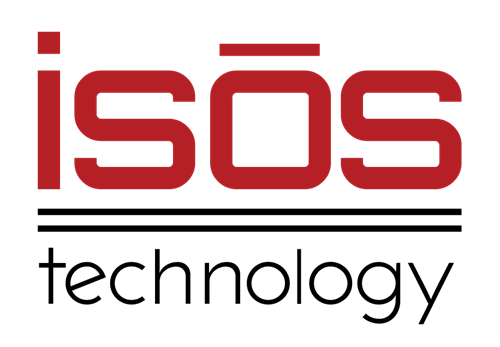 Key Takeaways
Key Takeaways
- Legacy system migration delivers strategic advantages through reduced maintenance costs, enhanced security, improved performance, and elimination of data silos.
- Warning signs, including rising support costs, security vulnerabilities, and vendor support termination, indicate when migration becomes an urgent business priority.
- To minimize disruption, successful migrations require comprehensive planning to address data integrity, business continuity, and organizational change management.
Is Your Legacy System Holding Back Your Enterprise? Key Indicators: It's Time to Migrate
The decision to migrate from legacy systems to modern cloud-based solutions represents a critical turning point for enterprises, government agencies, and fast-growing companies. The warning signs become increasingly apparent when an aging IT infrastructure begins to constrain rather than enable business objectives. Recognizing these indicators early for organizations running outdated systems allows you to transform potential disruption into a strategic advantage through well-planned legacy system migration.
Key Signs Your Legacy Systems Need Modernization
Escalating Maintenance Costs Signal the Need for Legacy System Migration
When your IT budget increasingly shifts toward maintaining rather than innovating, it indicates that your legacy systems require attention. Organizations with aging IT/ITSM tools often find themselves trapped in escalating costs, directly impacting the bottom line.
The financial burden of legacy system maintenance typically manifests in several ways. First, specialized talent to maintain outdated technology commands premium compensation as these skills become scarcer in the market. Second, aging hardware requires more frequent repairs and replacement parts that may be difficult to source. Third, legacy software often demands custom patches and workarounds that divert IT resources from strategic initiatives.
Data migration from legacy systems to cloud-based alternatives like Atlassian's suite delivers measurable cost benefits. According to research by Forrester, retiring old legacy systems could reduce hardware and operational running costs by 65%. Additionally, enterprises implementing cloud solutions report average maintenance cost reductions of 30-50% within the first year post-migration. This transformation shifts spending from operational maintenance to strategic investment, enabling IT departments to reallocate resources toward innovation and growth.
The technology transformation also eliminates the hidden costs of legacy infrastructure—emergency repairs, unplanned downtime, and productivity losses, which often go uncalculated but significantly impact operational efficiency. Organizations can systematically reduce these financial drains by implementing a structured legacy application migration strategy while establishing predictable, scalable cost models aligned with business objectives.
For enterprises concerned about migration expenses, it's worth noting that the cost of inaction typically exceeds the investment required for system modernization within 18-24 months, making legacy system migration an increasingly urgent financial consideration.
Security Vulnerabilities Expose Your Organization to Increasing Risk
Legacy systems often operate on outdated security protocols that fail to address modern cybersecurity threats, creating significant vulnerabilities for organizations relying on these technologies. This security gap is one of the most compelling reasons for pursuing legacy system migration.
Aging IT infrastructure frequently lacks support for contemporary encryption standards, multi-factor authentication, and advanced threat detection capabilities that form the foundation of modern security postures. More concerning, many legacy systems no longer receive regular security patches from vendors, leaving known vulnerabilities unaddressed. This situation creates an expanding attack surface that sophisticated threat actors actively target, knowing these systems likely contain exploitable weaknesses.
Migration from legacy systems to cloud-based alternatives like Atlassian's suite introduces enterprise-level security measures, including automated patch management, continuous vulnerability scanning, and compliance with current security frameworks. Cloud migration enables organizations to implement zero-trust architecture and advanced identity management that legacy systems cannot support.
Data migration from legacy environments must be approached with careful attention to security protocols. A step-by-step guide to secure migration includes comprehensive data classification, encryption of sensitive information during transfer, and verification of security controls in the target environment. Organizations undertaking legacy software replacement should establish detailed security requirements during vendor selection to ensure the new solution addresses both current threats and provides adaptability for emerging security challenges.
System integration with modern security tools offers additional benefits for regulated industries through improved audit capabilities and automated compliance reporting. Organizations can transform security from a growing liability into a strategic advantage by implementing a structured approach to legacy technology migration while significantly reducing organizational risk exposure.
Performance Limitations Constrain Business Agility and Growth
When legacy systems struggle to keep pace with current business demands, they become operational bottlenecks rather than growth enablers. Performance limitations in aging infrastructure manifest through increased response times, processing delays, and system timeouts, directly impacting employee productivity and customer experience.
Legacy application migration offers a path to overcome these constraints through modern architecture designed for scalability and performance. Cloud-based solutions like Atlassian's suite provide dynamic resource allocation that automatically adjusts to changing workloads, starkly contrasting legacy systems with fixed capacity limits. This elasticity enables organizations to maintain consistent performance during peak demand periods without overprovisioning resources during normal operations.
The digital transformation journey from legacy systems to cloud platforms delivers measurable performance improvements. Organizations report that average transaction processing speeds have increased by 40-60% following successful system modernization initiatives. These gains translate directly to enhanced user experiences, faster decision-making, and improved operational efficiency across the enterprise.
IT infrastructure migration also addresses the integration limitations common in legacy environments. Modern systems built on API-first principles enable seamless data exchange between applications, eliminating the data silos that plague legacy environments. This integration capability supports real-time information flow across the organization, helping make the organization more responsive and informed.
For organizations experiencing growth, legacy software replacement removes artificial constraints on expansion. Unlike traditional systems requiring lengthy hardware procurement cycles to increase capacity, cloud platforms scale on demand, allowing businesses to pursue new opportunities without technology limitations. This alignment between business ambition and technology capabilities represents one of the most strategic benefits of legacy system migration.
Integration Challenges Create Data Silos and Workflow Inefficiencies
Legacy systems often operate as isolated islands of functionality, creating significant integration challenges that fragment data and disrupt workflow continuity. These integration barriers represent a fundamental limitation of aging technology that modern cloud-based solutions like Atlassian's suite specifically address through their design architecture.
The inability to connect legacy applications with newer systems forces organizations to implement manual workarounds, duplicate data entry, and develop custom interfaces that require ongoing maintenance. This technical debt accumulates over time, creating increasingly complex environments that resist change and consume disproportionate IT resources. Legacy data migration provides an opportunity to break down these silos by consolidating information into unified platforms with standardized integration capabilities.
System integration challenges manifest in several operational impacts. First, decision-making suffers when critical information remains trapped in disconnected systems, forcing leaders to operate with incomplete perspectives. Second, process automation becomes nearly impossible when workflows must span multiple unconnected applications, leading to manual handoffs and process delays. Third, the customer experience deteriorates when service representatives cannot access comprehensive information during interactions.
Migration from legacy systems to modern alternatives delivers integration benefits through standardized APIs, pre-built connectors, and integration platforms that simplify connections between applications. According to industry studies, organizations implementing cloud migration strategies report average workflow efficiency improvements of 25-35% by eliminating manual data transfers and process handoffs between previously siloed systems.
Enterprise legacy migration projects should prioritize integration requirements during planning phases, mapping current and future data flows to ensure the modernized environment supports seamless information exchange. By addressing integration challenges through legacy system migration, organizations transform fragmented technology landscapes into cohesive digital ecosystems that enable rather than impede operational excellence.
Lack of Vendor Support Creates Unsustainable Risk
The end of vendor support for legacy systems creates an unsustainable risk position that often serves as the final catalyst for legacy system migration initiatives. When software providers discontinue maintenance, security updates, and technical assistance for aging platforms, organizations face a critical decision point with significant implications for business continuity and compliance.
This support cliff manifests in several dimensions. First, security vulnerabilities discovered after end-of-support remain unpatched, creating permanent exposures that attackers actively target. Second, compatibility issues with newer technologies become insurmountable without vendor-provided updates, gradually isolating the legacy environment. Third, compliance requirements often explicitly mandate supported software, putting organizations at regulatory risk when running unsupported systems.
Demoting legacy systems to supported alternatives requires careful planning to minimize disruption. A step-by-step guide to managing this transition starts with a comprehensive inventory of affected systems, assessment of business criticality, and development of prioritized migration roadmaps. Organizations should establish clear criteria for selecting replacement solutions, focusing on long-term support commitments from vendors with proven stability.
Cloud migration offers particular advantages when addressing support concerns. Cloud providers typically manage the underlying infrastructure and platform updates, eliminating many of the support challenges associated with on-premises legacy software. The Atlassian ecosystem, for example, provides continuous updates and security patches as part of its standard service offering, transferring the support burden from internal IT teams to the vendor.
Given the escalating risks of delay, system upgrade initiatives should receive priority resource allocation for organizations facing imminent support deadlines. The cost and complexity of migrating legacy systems typically increase significantly after support ends, as technical expertise becomes scarcer and integration challenges compound. Organizations can convert a looming crisis into a controlled transformation opportunity. by proactively addressing vendor support limitations through strategic migration planning
Talent Acquisition and Retention Challenges Increase Operational Risk
The shrinking talent pool for legacy technologies creates a growing operational risk that often accelerates legacy system migration timelines. Organizations face increasing difficulty maintaining and supporting critical legacy infrastructure, as experienced professionals retire or transition to more current technologies, this talent shortage manifests across multiple dimensions. First, recruitment for legacy skills becomes increasingly expensive as demand outpaces supply, driving compensation costs significantly above market rates for comparable modern technology roles. Second, knowledge transfer becomes challenging when incomplete documentation and few individuals possess a comprehensive system understanding. Third, employee satisfaction suffers when technical staff work with outdated technologies that limit career development and marketability.
Legacy application migration addresses these talent challenges by transitioning to technologies with robust talent ecosystems. Cloud platforms like Atlassian's suite benefit from large developer communities, comprehensive training resources, and certification programs that ensure a sustainable pipeline of qualified professionals. This talent availability reduces dependency on specialized knowledge held by a few individuals and creates resilience against staff transitions.
The system modernization process offers opportunities to revitalize IT teams through exposure to current technologies and methodologies. Organizations report improved recruitment outcomes and higher retention rates following migration projects as technical staff gain valuable experience with in-demand skills. This talent transformation extends beyond the IT department, as modern systems typically offer improved user experiences that reduce training requirements and increase adoption across the organization.
For enterprises concerned about knowledge loss during migration, structured knowledge capture should be integrated into the legacy system transfer process. This approach preserves critical business rules and configurations while enabling the organization to benefit from modern technology without sacrificing institutional knowledge. By addressing talent challenges through strategic migration initiatives, organizations can simultaneously reduce operational risk and position themselves as attractive employers in competitive technical labor markets.
Frequently Asked Questions
What exactly is legacy system migration?
Legacy system migration refers to transitioning outdated applications, infrastructure, and data to modern technology platforms. This transformation typically involves replacing aging software with contemporary solutions that offer improved functionality, security, and integration capabilities. The process encompasses several phases, including assessment, planning, data migration, implementation, and validation to ensure business continuity throughout the transition. Legacy system migration differs from simple upgrades by fundamentally reimagining how technology supports business processes rather than merely updating existing systems.
How long does a typical legacy system migration take?
The timeline for legacy system migration varies significantly based on system complexity, organizational size, and migration approach. Small to mid-sized implementations typically require 3-6 months, while enterprise-scale migrations often extend to 12-18 months or longer. Factors influencing the timeline include data volume, integration requirements, customization needs, and organizational change management capabilities. Phased approaches that migrate functionality incrementally often reduce risk but extend overall timelines compared to "big bang" implementations that transition all components simultaneously.
What are the primary risks of migrating legacy systems?
Primary risks in legacy system migration include data loss or corruption during transfer, business disruption during cutover periods, budget overruns due to unexpected complexity, and user adoption challenges. Technical risks include incomplete requirements gathering, integration failures between new and remaining legacy systems, and performance issues in the modernized environment. Organizations can mitigate these risks through comprehensive testing, maintaining parallel systems during transition periods, implementing robust data validation protocols, and developing detailed contingency plans for critical failure scenarios.
How should we prepare our team for a legacy system migration?
Effective team preparation for legacy system migration combines technical readiness with organizational change management. Key preparation steps include conducting skills assessments to identify training needs, establishing cross-functional migration teams with clear responsibilities, developing comprehensive communication plans that address stakeholder concerns, and implementing training programs that build technical competency and user confidence. Organizations should identify and empower change champions across departments to support adoption and provide feedback throughout migration.
What criteria should we use to select new systems when replacing legacy applications?
Selection criteria for replacement systems should balance immediate requirements with strategic flexibility. Key evaluation factors include alignment with business processes, integration capabilities with existing systems, vendor stability and support commitment, total cost of ownership (including implementation and ongoing maintenance), security and compliance features, and scalability to accommodate future growth. Organizations should prioritize solutions offering standardized APIs, robust documentation, and established user communities that indicate long-term viability and support ecosystems.
How do we ensure data integrity during the migration process?
Data integrity during migration requires a structured approach encompassing planning, execution, and validation phases. Organizations should begin with comprehensive data profiling and cleansing in the source system, establish clear transformation rules for data restructuring, implement automated validation checks that compare source and target data, maintain detailed audit trails of all data movements, and perform automated and manual sampling to verify accuracy. Critical data elements should undergo 100% validation, while statistical sampling may suffice for less sensitive information.
What are the cost considerations for legacy system migration?
Cost considerations extend beyond immediate implementation expenses to include long-term operational impacts. Organizations should budget for software licensing, implementation services, data migration tools, infrastructure changes, staff training, temporary parallel operations, and post-implementation optimization. Hidden costs often include productivity impacts during transition, extended support for legacy systems during phased migrations, and potential customization requirements to address functionality gaps. While migration requires significant investment, organizations typically realize positive ROI through reduced maintenance costs, improved operational efficiency, and enhanced business capabilities.
How do we maintain business continuity during the migration?
Maintaining business continuity during migration requires careful planning and execution across multiple dimensions. Key strategies include implementing phased migrations that limit exposure to critical functions, establishing robust testing environments that mirror production, developing detailed rollback procedures for unexpected issues, scheduling major transitions during lower-activity periods, providing enhanced support during cutover phases, and maintaining parallel systems until the new environment demonstrates stability. Organizations should develop specific continuity plans for each critical business process, identifying alternative procedures for temporarily unavailable systems.
What post-migration activities should we plan for?
Post-migration activities are critical for realizing the full benefits of modernization investments. Organizations should plan for performance optimization based on actual usage patterns, user feedback collection and implementation, knowledge transfer to operational support teams, documentation updates reflecting the new environment, retirement of redundant systems and data, and measurement against defined success metrics. Additionally, post-implementation reviews should capture lessons learned to improve future migration initiatives and identify gaps requiring attention.
How do we measure the success of our legacy system migration?
Success measurement should combine quantitative metrics with qualitative assessments across multiple dimensions. Key performance indicators typically include system performance improvements (response times, throughput, availability), operational efficiency gains (process cycle times, automation rates, error reduction), financial impacts (maintenance cost reduction, productivity improvements, new revenue opportunities), and user satisfaction metrics. Organizations should establish baseline measurements before migration and track improvements at defined intervals post-implementation to demonstrate value and identify areas requiring additional optimization.
Sources:
Sign up to receive more great content
Learn more about Atlassian and how Isos can help by signing up to receive our latest blogs, eBooks, whitepapers and more.













